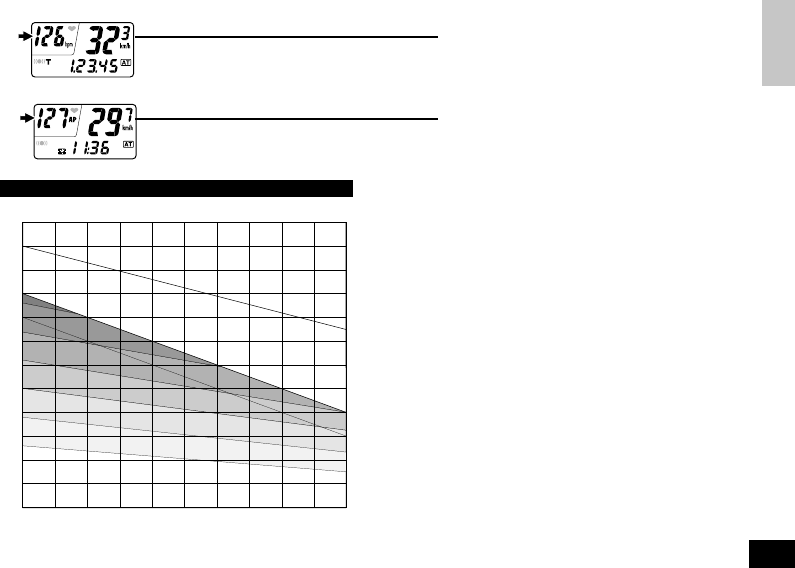
E
13
Heart Rate Training
Generally, heart rate goes up while exercising. The harder you exer-
cise, the more your heart rate goes up. Thus heart rate is a good
indication of the exercise intensity. Setting a certain heart rate and
making an effort to maintain that rate is a scientific training method,
which can be utilized by beginners or top level athletes. Before start-
ing a training program, consult a medical specialist or trainer.
1. General training for improving health
By setting your target zone (your target heart rate), you can train to
improve your health through bicycling. Depending on your physical
strength, the training level from 30% up to 70% is possible. Desirable
frequency is: more than three times a week; and more than twenty or
thirty minutes at a time. For obtaining your target zone, refer to Fig.
25, which illustrates the correlation between the heart rate and train-
ing level. For beginners, the level of 30% or so is recommended; from
this point, gradually increase according to your experience. For the
highest goal, the level of 70% or so is enough to reach. Meanwhile,
for the purpose of losing weight, train at the comparatively lower level
for a longer time; for more than one hour, if possible.
PULSE RATE (bpm)
AGE
200
180
160
140
120
100
90
20 30 40 50 60 70
TARGET
TARGET
ZONE
ZONE
TARGET
ZONE
30%
30%
40%
40%
50%
50%
6
0
%
60%
70%
70%
80%
80%
Exercise Level
30%
40%
50%
6
0
%
70%
80%
Exercise Level
MAXIMUM PULSE RATE (204 – 0.69 x AGE)
1
9
0
190
– A
G
E
AGE
1
8
0
180
– A
G
E
AGE
1
9
0
–
A
G
E
1
8
0
–
A
G
E
MAXIMUM PULSE RATE (204 – 0.69 x AGE)
Fig.25
HR Heart Rate
Displays the current heart rate while Wireless Heart Rate Sensor is attached.
0 (30) - 199 bpm
If it exceeds 200 bpm, the third digit drops. (Example: 205 bpm = 05 bpm)
AP Average Heart Rate
Displays the average heart rate from the start to the current point, while Wireless Heart Rate
Sensor is attached. With Reset operation, it returns to zero.
0 - 199 bpm


















